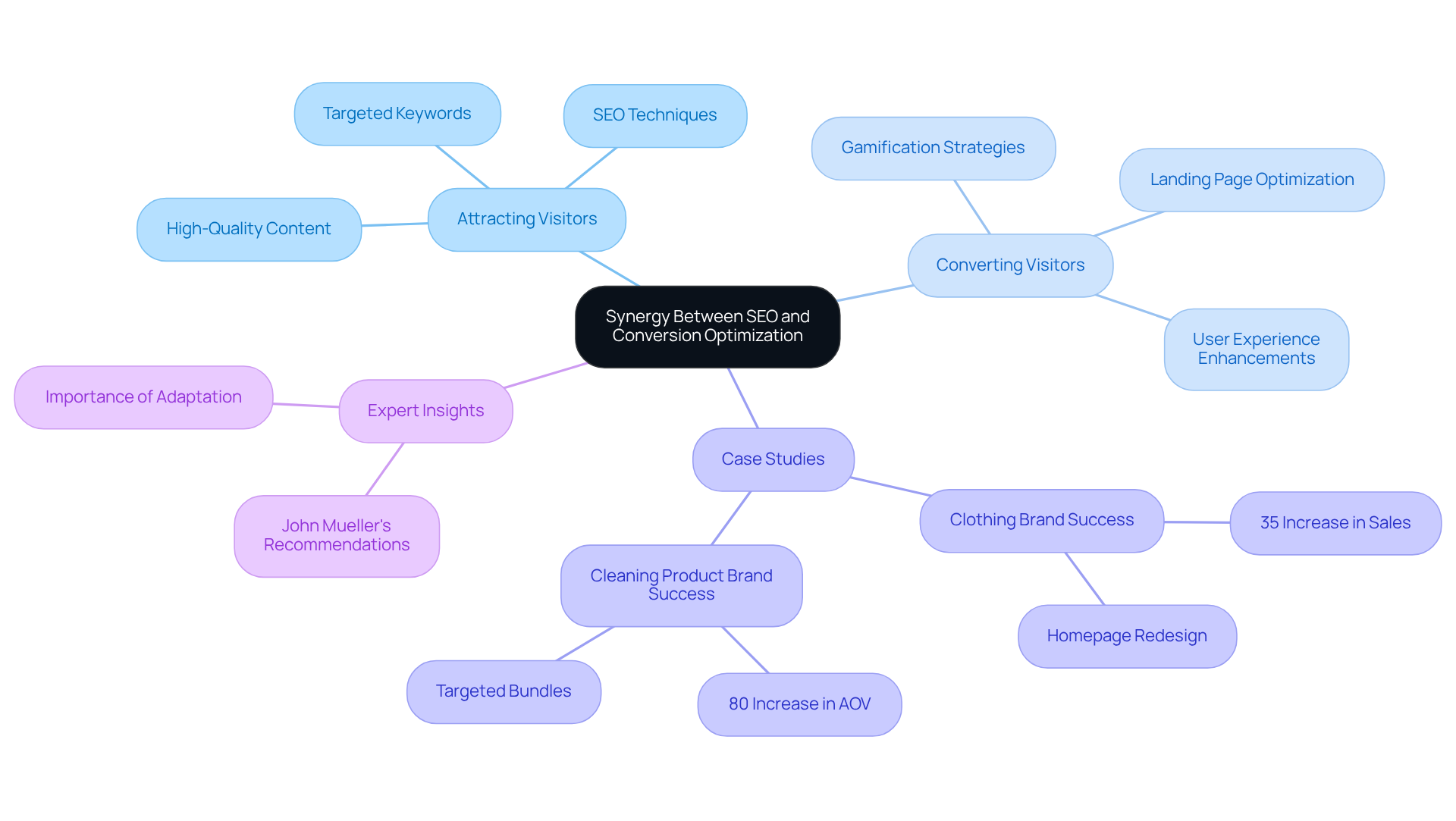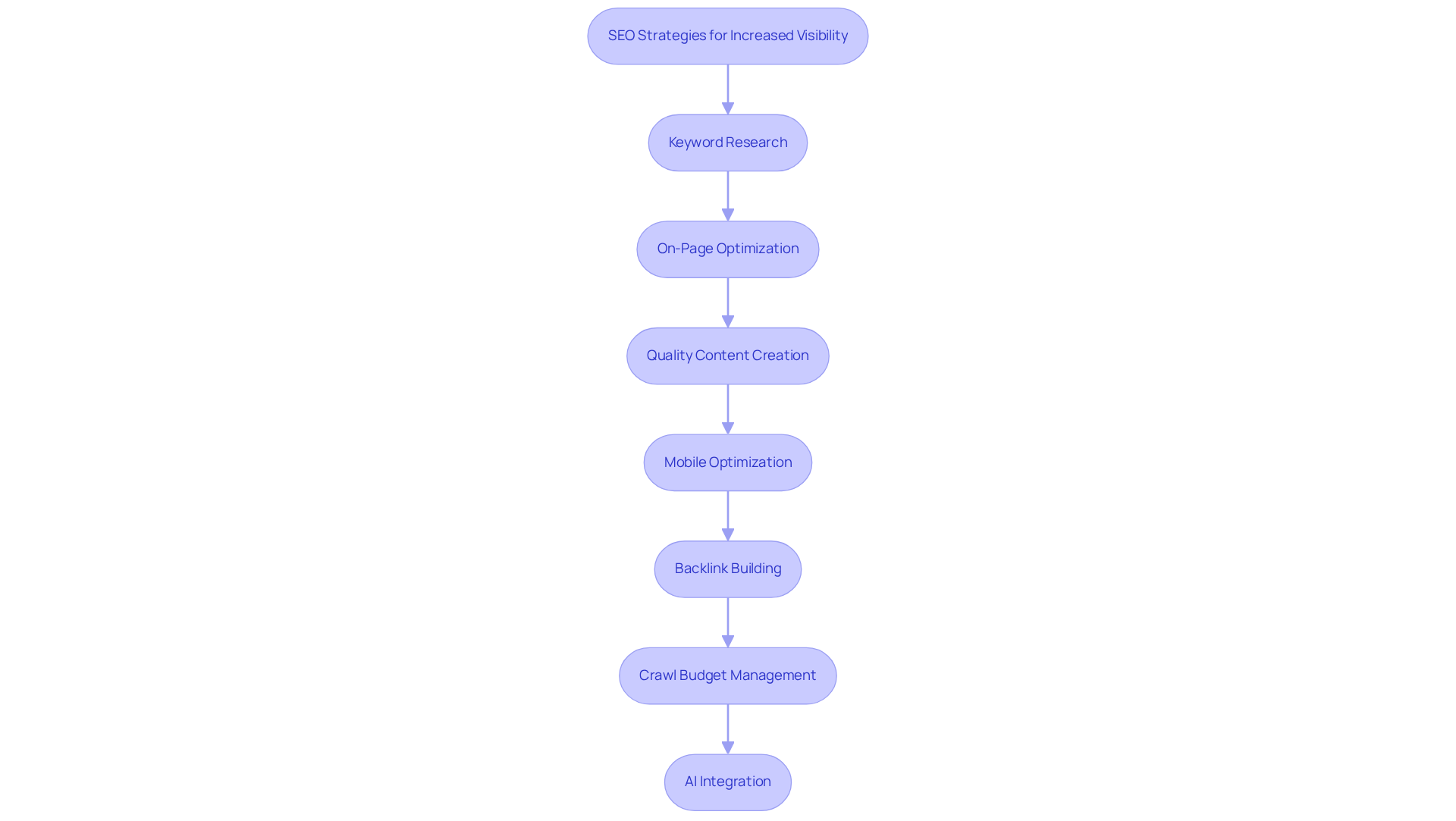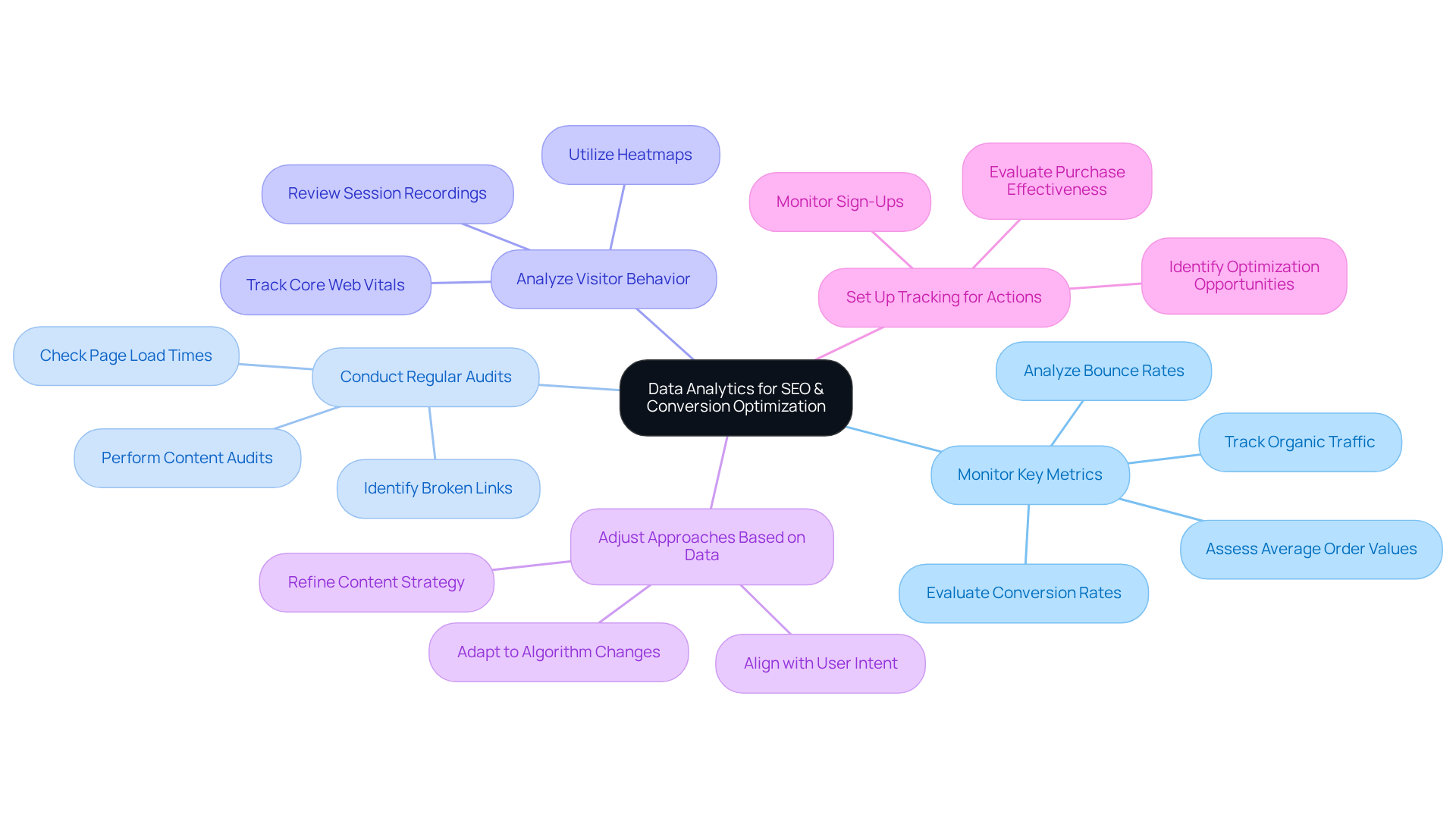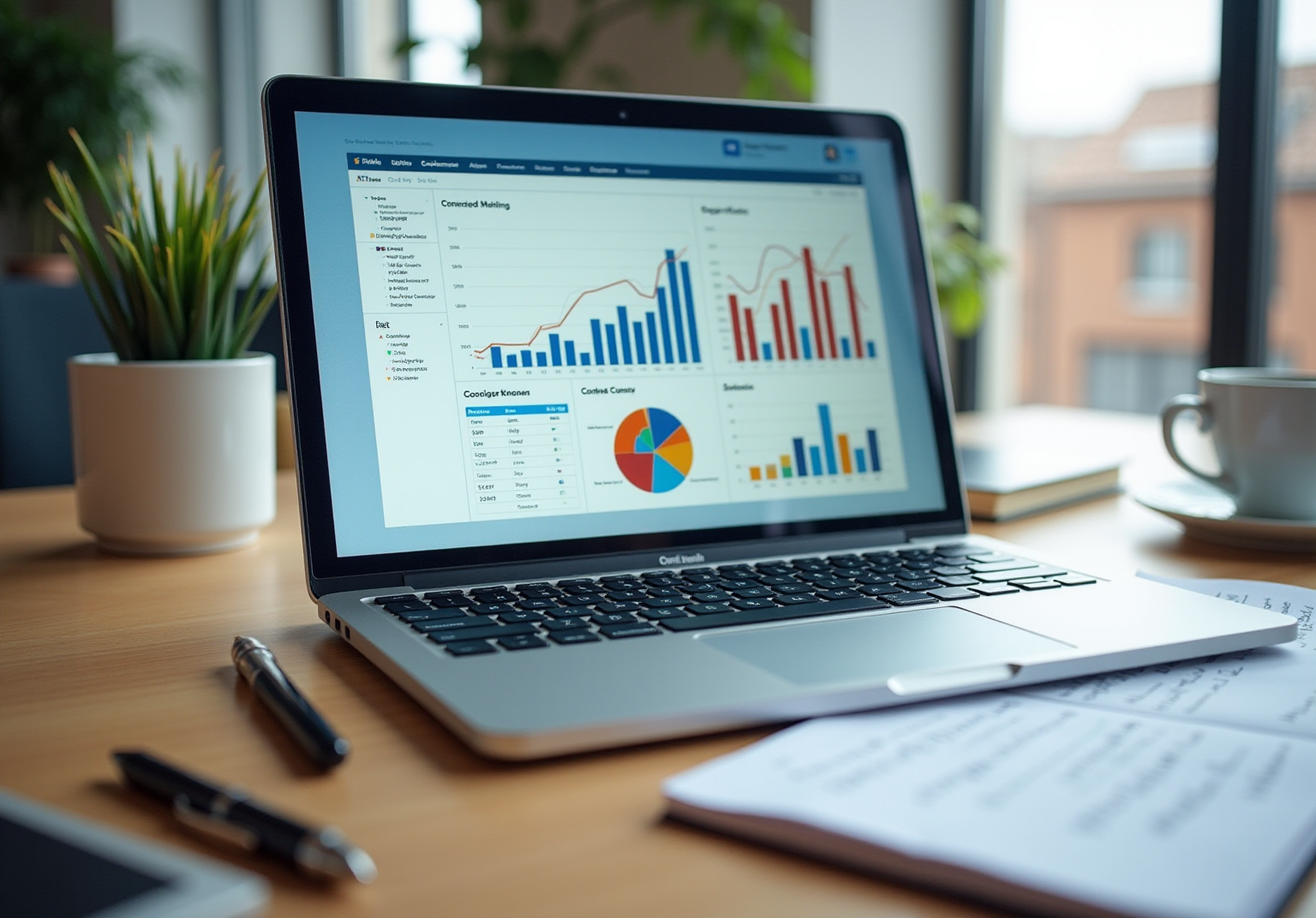
Overview
Maximizing profit through SEO and conversion optimization strategies requires a strategic integration of effective SEO techniques with targeted conversion practices. This approach is essential for attracting relevant visitors and converting them into paying customers. The article substantiates this claim by presenting compelling case studies and expert insights that illustrate how brands can significantly enhance their visibility and sales through cohesive strategies. These strategies include:
- Keyword optimization
- A/B testing
- The utilization of data analytics for continuous improvement
By embracing these methods, businesses can not only increase their online presence but also drive higher conversion rates.
Introduction
The intricate relationship between SEO and conversion optimization represents a pivotal opportunity for brands seeking to enhance profitability within an increasingly competitive digital landscape. By strategically harnessing the power of both methodologies, businesses can attract a consistent influx of relevant visitors and convert them into loyal customers.
However, the challenge lies in the effective integration of these approaches—how can brands ensure that their SEO efforts yield tangible sales growth?
This article explores best practices for maximizing profit through the synergy of SEO and conversion optimization, offering actionable insights that can significantly transform online performance.
Understand the Synergy Between SEO and Conversion Optimization
SEO and enhancement of results are inherently interconnected, functioning as complementary tactics that drive business success. SEO and conversion optimization aim to attract visitors through organic search, while enhancing the process focuses on converting those visitors into paying customers. A website optimized for search engines not only draws in more relevant visitors but also heightens the likelihood of successful outcomes. For instance, employing targeted keywords that resonate with visitor intent can significantly boost engagement rates, as individuals are more likely to discover what they seek. Furthermore, optimizing landing pages for both SEO and conversion optimization fosters a seamless user experience that encourages purchases.
Research indicates that effective SEO techniques can yield substantial increases in success rates for DTC brands. In 2025, brands that adeptly integrated SEO with sales strategies reported an average increase of 36%. This synergy allows brands to with revenue goals, ensuring that every facet of their digital presence contributes to profitability.
Parah Group's case studies illustrate this integration. For example, a $30M clothing brand witnessed a 35% increase in sales rates after implementing strategies such as redesigning their homepage to highlight social validation, reducing unnecessary pop-ups, and refining product pricing. Similarly, a $15M cleaning product brand enhanced their average order value (AOV) by 80% through targeted bundles, establishing free shipping thresholds, and gamifying the progress bar in the cart slider. These outcomes underscore the effectiveness of merging SEO and conversion optimization techniques.
Experts stress the significance of this integration. John Mueller, a Google Search Advocate, points out that adapting to evolving audience needs is crucial for maintaining visibility and engagement. By concentrating on high-quality, original content that aligns with user expectations, brands can elevate their SEO and conversion optimization, thereby improving both search rankings and conversion rates. The effective incorporation of these methods not only amplifies traffic but also enhances sales potential, making it imperative for DTC brands to prioritize SEO and conversion optimization in their marketing strategies. Overlooking this integration can result in missed opportunities and diminished profitability, highlighting the necessity for a cohesive strategy.

Implement Effective SEO Strategies for Increased Visibility
To enhance visibility, brands must prioritize several key SEO strategies:
- Keyword Research: Begin by identifying high-traffic, low-competition keywords that are directly relevant to your products or services. Utilizing tools like Google Keyword Planner or SEMrush can uncover that drive significant traffic.
- On-Page Optimization: It is essential to optimize each page with relevant keywords in titles, meta descriptions, headers, and throughout the content. This practice aids search engines in understanding the page's relevance, which significantly impacts organic traffic growth.
- Quality Content Creation: Develop high-quality, informative content that addresses the needs and questions of your target audience. This approach not only improves SEO and conversion optimization but also builds trust with prospective clients, resulting in greater engagement and improved outcomes.
- Mobile Optimization: Given that mobile users constitute a substantial portion of web traffic, ensure your website is mobile-friendly. Google prioritizes mobile-optimized sites in search results, making this a crucial factor for visibility in 2025.
- Backlink Building: Cultivate backlinks from reputable sites to enhance domain authority and improve search rankings. Strategies such as guest blogging and forming strategic partnerships can effectively bolster your backlink profile.
- Crawl Budget Management: For larger e-commerce sites, managing your crawl budget is essential. Prioritize fast-loading, high-converting pages to ensure search engines can efficiently index your most valuable content.
- AI Integration: Stay abreast of emerging trends such as Generative Engine Optimization (GEO), which focuses on preparing content for AI-driven search results. This proactive approach can enhance your visibility in an increasingly AI-influenced search landscape.
Key Takeaway:
Implementing these SEO strategies can significantly amplify a brand's visibility, leading to increased organic traffic and potential conversions.

Adopt Proven Conversion Optimization Techniques to Boost Sales
To effectively boost sales through conversion optimization, brands must implement the following techniques:
- A/B Testing: Conducting regular A/B tests on landing pages, call-to-action buttons, and product descriptions is essential for identifying variations that yield the highest conversion rates. Notably, 77% of companies currently employ A/B testing to enhance their website performance, underscoring its critical role in optimizing audience engagement.
- Customer Experience (CX) Design: Investing in a clean, intuitive design that seamlessly guides individuals through the purchasing process is paramount. Research shows that a well-structured site can reduce bounce rates and increase conversions by up to 400%. For instance, Staples experienced a remarkable 500% increase in online revenue following a UX-focused site redesign, illustrating the direct impact of effective design on sales.
- Social Proof: Integrating testimonials, reviews, and case studies builds trust with potential customers. Social proof significantly influences buying choices, as individuals are more inclined to convert when they observe positive feedback from others.
- Clear Call-to-Actions (CTAs): Prominent and compelling CTAs are vital. Using action-oriented language motivates individuals to take the next step. A/B testing different CTA texts can lead to substantial improvements in click-through rates, as demonstrated by PriceCharting's change from 'Download' to 'Price Guide,' resulting in a 620.9% increase in clicks.
- Exit-Intent Popups: Implementing popups that appear when a user is about to leave the site offers discounts or captures email addresses for future marketing. This strategy effectively retains potential customers who might otherwise .
Key Takeaway:
Implementing these conversion optimization techniques can lead to significant increases in sales, ensuring that traffic is effectively converted into revenue.

Leverage Data Analytics for Continuous Improvement in SEO and Conversion Rates
Data analytics is essential for enhancing SEO and conversion optimization, thereby driving success rates. Brands must concentrate on the following strategies:
- Monitor Key Metrics: Regularly track metrics such as organic traffic, bounce rates, conversion rates, and average order values using tools like Google Analytics. This data reveals which approaches are effective and where improvements are necessary. Notably, 49% of digital marketers report that organic search delivers the highest ROI, highlighting the significance of these metrics. Parah Group emphasizes that a robust SEO and conversion optimization strategy can yield substantial returns, as the benefits from these efforts can extend for months, unlike traditional advertising expenditures.
- Conduct Regular Audits: Implement SEO audits to identify areas requiring enhancement, including broken links, slow page load times, and content gaps. A thorough content audit can pinpoint underperforming pages, and regular audits can markedly improve site performance, as even minor adjustments can lead to considerable revenue increases over time. Parah Group's holistic approach ensures that every aspect of a brand's online presence is enhanced through SEO and conversion optimization for maximum impact.
- Analyze Visitor Behavior: Utilize heatmaps and session recordings to gain insights into interactions with your site. Understanding informs design and content decisions, ensuring that the site meets expectations and enhances engagement. Moreover, tracking Core Web Vitals is vital, as these metrics affect user experience and search rankings. Parah Group delves into behavior analysis, aligning paid ads and landing pages to drive significant growth by utilizing SEO and conversion optimization.
- Adjust Approaches Based on Data: Maintain agility in your strategy by adjusting plans according to data insights. If specific keywords are underperforming, refine your content strategy to better align with user intent and search behavior. This adaptability is crucial, especially as search engines frequently update their algorithms. Parah Group's data-driven decisions directly contribute to business growth by utilizing SEO and conversion optimization to minimize customer acquisition costs.
- Set Up Tracking for Actions: Establish monitoring for specific activities, such as sign-ups and purchases, to evaluate the effectiveness of your strategies. This enables a clear understanding of which tactics drive results and where further optimization is necessary. It is critical to avoid common pitfalls in CRO, such as testing without adequate traffic or relying solely on best practices rather than data. Parah Group's expertise ensures that brands can maximize their existing resources through high-velocity testing and strategic insights.
Key Takeaway: Leveraging data analytics for continuous improvement empowers brands to adapt their strategies in SEO and conversion optimization, ultimately maximizing profitability over time.

Conclusion
Maximizing profit through the integration of SEO and conversion optimization is not merely a strategy; it is a necessity for businesses striving to excel in an increasingly competitive digital landscape. By acknowledging the interconnectedness of these two elements, brands can forge a powerful synergy that enhances visibility and drives sales. A well-optimized website that attracts relevant visitors and effectively converts them into customers is essential for sustainable growth and profitability.
This article highlights several key strategies that brands can implement to achieve this synergy:
- Conducting thorough keyword research
- Optimizing on-page elements
- Leveraging data analytics for continuous improvement
Each tactic plays a crucial role in enhancing both SEO and conversion rates. Case studies from successful brands demonstrate the tangible benefits of these strategies, underscoring the importance of a holistic approach that aligns marketing efforts with revenue goals.
In a world where digital presence is paramount, embracing both SEO and conversion optimization not only boosts traffic but also maximizes the potential for sales. Brands are urged to take actionable steps by implementing proven techniques and continuously analyzing performance metrics. This commitment to optimization will enhance visibility while fostering long-term customer relationships, ultimately leading to increased profitability. The time to act is now—prioritize the integration of these strategies to unlock the full potential of your online presence.
Frequently Asked Questions
What is the relationship between SEO and conversion optimization?
SEO and conversion optimization are interconnected strategies that aim to attract visitors through organic search and convert them into paying customers. A website optimized for search engines increases relevant traffic and enhances the likelihood of successful outcomes.
How can targeted keywords impact engagement rates?
Employing targeted keywords that resonate with visitor intent can significantly boost engagement rates, as users are more likely to find what they are looking for, leading to increased interaction with the website.
What are the benefits of optimizing landing pages for both SEO and conversion?
Optimizing landing pages for both SEO and conversion improves the user experience, which encourages purchases and increases the likelihood of converting visitors into customers.
What evidence supports the effectiveness of integrating SEO with sales strategies?
Research indicates that brands integrating SEO with sales strategies reported an average increase of 36% in success rates. Case studies, such as a $30M clothing brand achieving a 35% increase in sales and a $15M cleaning product brand enhancing their average order value by 80%, further illustrate this effectiveness.
What strategies can brands implement to merge SEO and conversion optimization?
Strategies include redesigning homepages to highlight social validation, reducing unnecessary pop-ups, refining product pricing, establishing free shipping thresholds, and gamifying the cart experience.
Why is it important for brands to adapt to evolving audience needs?
Adapting to evolving audience needs is crucial for maintaining visibility and engagement, as emphasized by experts like John Mueller. Focusing on high-quality, original content that aligns with user expectations can elevate both SEO and conversion optimization.
What are the consequences of overlooking the integration of SEO and conversion optimization?
Overlooking the integration can lead to missed opportunities and diminished profitability, making it essential for brands to adopt a cohesive strategy that prioritizes both SEO and conversion optimization in their marketing efforts.
FAQs











